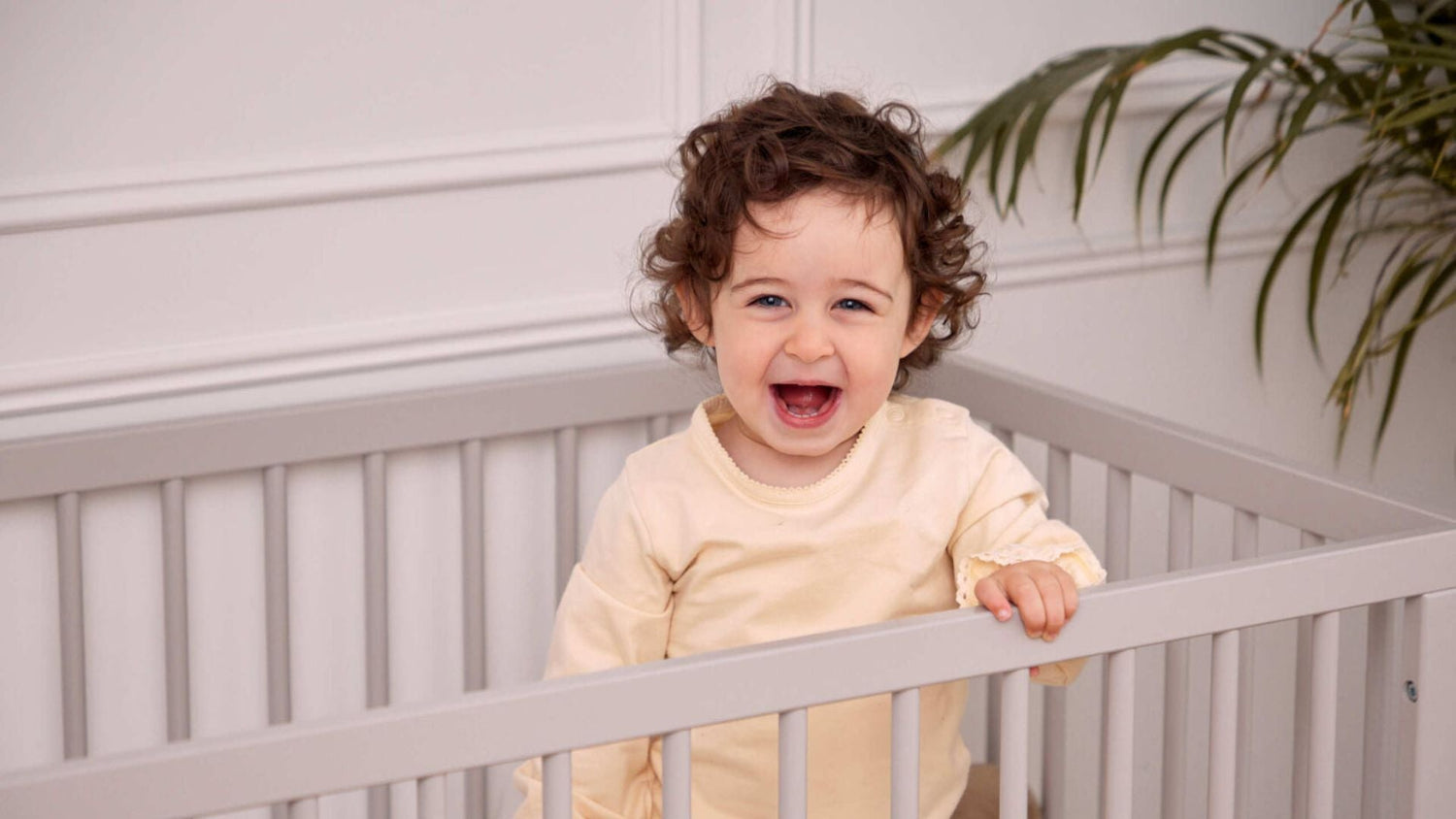High chairs are an important purchase for any parent as they allow infants and young children to learn how to eat sitting up and to safely participate in family dinners. However, it can be difficult to know when a child is ready to use a high chair. Each child has slightly different growth rates, and it is important to consider developmental milestones, such as being able to hold their head up, when considering whether your child is ready for a high chair. In this guide, we will go over common questions regarding high chair use and provide age-appropriate recommendations.
Scroll through the blog or jump immediately to the section you need:
When Can a Baby Sit in a High Chair?
How Long Can a Baby Sit in a High Chair?
When to Stop Using a High Chair?
Best Age for High Chair Use
What age is best for high chair use? Traditionally, babies would not start using high chairs until they could reliably sit up on their own and support their own head weight. This would generally happen around 6 months depending on the child’s development rate.
However, modern high chairs, such as the Nup Nup Chair, are designed to allow for angle adjustments in addition to height adjustments. This means the high chair can double as a baby seat until the child is ready to sit up on their own. The Nup Nup High Chair has 3 different seat angle positions and can even lie completely flat, making it age-appropriate from day one. Similarly, the Mash Chair has a detachable high chair seat that can be replaced with an inclined newborn seat.
These modern designs save you space and money by combining infant seats and high chairs into one foldable piece of furniture. It is less economical to purchase a high chair for a 4 month old followed by another baby chair for 6 months plus and then another chair for a 1 year old. Thus, even if an adjustable chair is a little more expensive now, it will save you money in the long run.
When Can a Baby Sit in a High Chair?
If you decide to go for a more traditional high chair design, it is important you do not rely on it until you are fully confident your baby can sit up on their own. Here are a few ways you can test if your baby is ready for a high chair:
- Do their shoulders stay straight and their spine stay upright even after sitting for several minutes without assistance?
- Are they able to eat solid food? Do they eat food with ease while in a sitting position?
- While sitting, are they able to keep their arms free to grab at items around them?
If you can answer yes to all of the above questions and your child is at least 6 months old, then congrats! Your child is ready to start eating from a high chair. This is an important milestone as it will allow your baby to more easily socialise with the rest of the family while you dine or do other tasks.
How Long Can a Baby Sit in a High Chair?
There is no easy answer to this question. Depending on your child’s age, temperament, and developmental progress, the length of time they can comfortably sit in a high chair could vary from just a few minutes to a couple of hours. The good news is an uncomfortable child is unlikely to stay quiet about it for long! If your child is complaining of discomfort in their high chair, make sure to remove them in a timely manner and check the chair and its lining for anything that could be poking or scratching against your child. It may also be a sign that it is time to adjust the height of the chair to accommodate your growing kid.
No matter what, a child should never be left unsupervised in a high chair. Even the best high chairs can roll away or be pushed over if not set up properly. Whenever you use your high chair, make sure to follow these safety rules:
- Always consult the owner's manual when setting up your chair.
- Check your chair for damage and unsteadiness before placing your child into it.
- If possible, keep your baby secure using the chair’s safety harness. Many high chair accidents occur as a result of babies standing up in the chair.
- Place the chair where you can clearly supervise it at all times and move it as necessary.
- Position the chair well away from any sharp or hot objects as well as any walls or counters that your child could use to push off and tip the high chair over.
- Clean the chair after every use and look for crumbs or small objects that could have gotten wedged in the seat’s lining.
- Register the high chair with the manufacturer so they can notify you if there is a safety recall.

When to Stop Using a High Chair?
Perhaps just as important as finding out when to start using a high chair is figuring out when to stop using one! On average, most kids stop using a high chair around 18 months. However, modern designs, such as the Nup Nup High Chair, allow for such a wide range of height positions that they can be used all the way up until the child’s third birthday. You know your child best, so trust yourself to make the right decision regarding exactly when to move your child from a high chair to a booster seat at the table.
Here are some signs your child is ready to graduate from their high chair:
- They are cramped even when the footrest is in its lowest position.
- They’re able to sit upright and stay balanced for long periods of time.
- They appear to be uncomfortable inside the seat itself.
- They regularly try to climb out of their chair or quickly get frustrated at being confined.
- They’re big enough to tip over the chair when they climb up or move around.
- They can hop down from a chair and land on their feet.
Should a 3-Year-Old Be in a High Chair?
While it may be tempting to keep the high chair harness on your wiggly, giggly 3-year-old, it is not recommended to keep a larger child in high chairs. This is because the child is likely strong enough to rock the chair around or even push it over. Discomfort in a chair designed for younger children can also cause pain and irritability. If your 3-year-old is too big for the high chair but too small for your regular dining chairs, consider buying a secure booster chair to cover the transitionary period. If your child is unable to support themselves in a booster chair due to medical reasons, consult your doctor on the best solution to help them enjoy meals at the table with the rest of the family.
|
HIGH CHAIRS |
CRIBS |
BEDDING |








